Glossy and gorgeous, yet still easy to care for: the hoya obovata is one of the rare plants, yet owning one is so worth it! Read on for this ultimate care guide to caring for the hoya obovata.
Table of Contents
Background
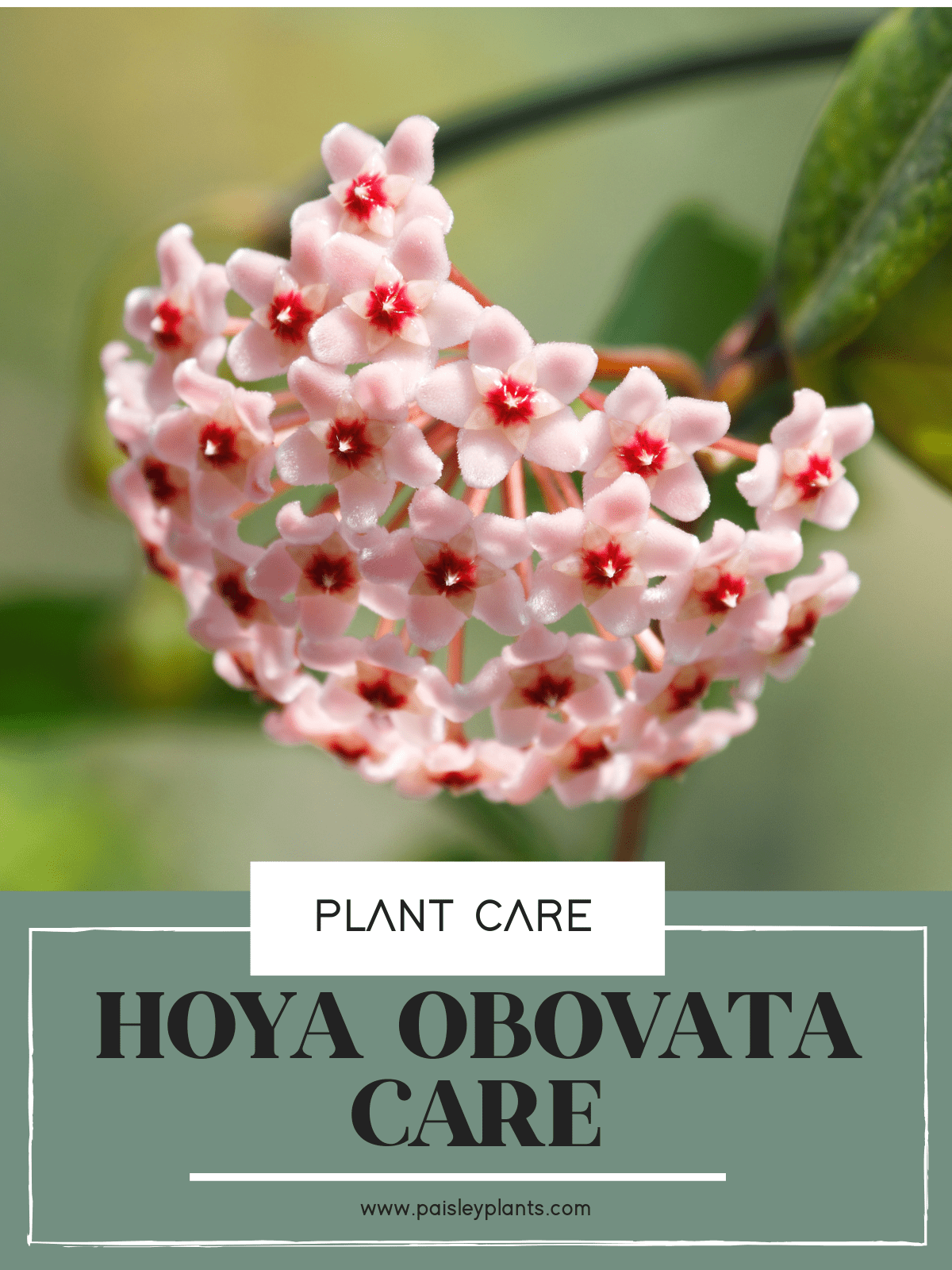
This post includes affiliate links.
Native to the islands of Indonesia, the Hoya obovata is one of the most identifiable members of the hoya family. The hoya obovata is a tropical, trailing plant that works well for either hanging planters or trellis structures.
The hoya obovata is often identifiable by their beautiful leaves. Their leaves are flat, fleshy ovals shapes that are dark green in color with silvery splashes peppered all over. At maturity, these plants can reach a length of between 12 to 20 feet long. During the spring and summer, the obovata also produces flower clusters shaped like stars. These flowers are typically light pink with a red crown in the center.
Just like all members of the hoya plants, the hoya obovata is non-toxic to both humans and animals. You can be comfortable owning one of these plants, especially if you have small children or pets running around the house.
Hoya Obovata Care
Let’s chat about your hoya obovata care guide!
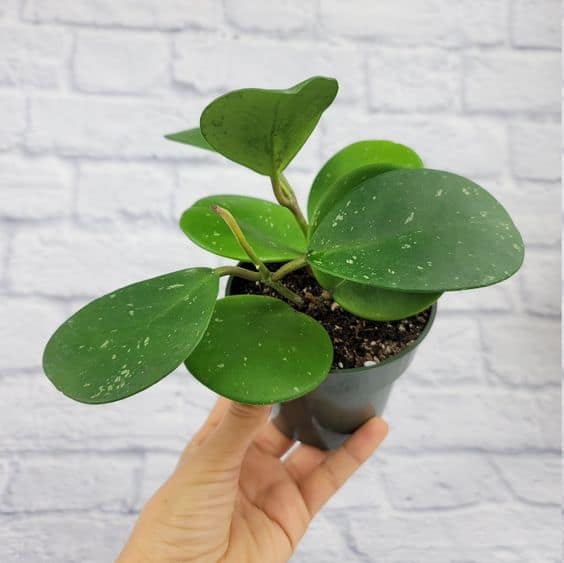
Image via Variegated Gardens on Etsy
Sun & Light
In their native habitat, the hoya obovata grow in filtered light, shaded by the canopy of trees they live under. At home, try to replicate these conditions by giving your hoyas bright, yet indirect light.
You can grow your plant in a a spot where it gets filtered light through a sheer curtain.
Obovata plants don’t do well in low light so be sure they get enough light in order to grow well! Ensuring your plant gets enough light will give it the best chance to bloom!
Soil Type for Hoya
Hoya obovata plants are epiphytic, which requires a soil with good drainage that allow the roots to receive air circulation. At the same time, this soil should still be able to retain some moisture to hydrate your plant. Select a soil that contains materials such as peat, perlite, orchid bark, and compost.
Water
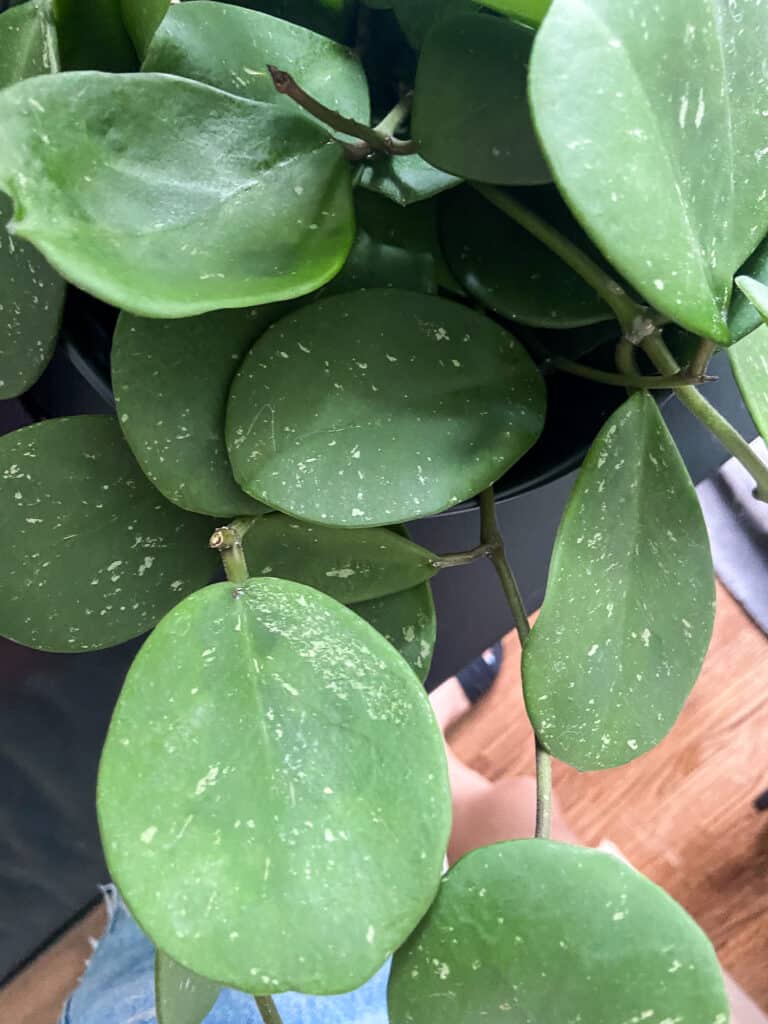
The obovata is sensitive to overwatering and soggy soil, just like most succulent plants. Because of this, it is of the utmost importance to water your plant correctly.
A good rule of thumb is to wait until the soil is completely dry before re-watering your plant. During the spring and summer, it’s best to water your plant more frequently. On the other hand in the winter, it’s best to space out waterings.
I like to do the finger test when it comes to checking moisture. Stick your finger into the top few inches of soil. If it’s wet and sticks to your finger, don’t water it. If it feels dry and doesn’t stick on your finger, your hoya needs some water!
Fertilizer
Hoya obovatas thrive on a regular routine of fertilizer during their active growing period. It should only be applied during the spring and summer, and completely cease during the fall and winter. Apply it twice a month during the growing season.
Also select one for your hoya that has a higher content of nitrogen, which will help encourage more vigorous foliage growth. However, if your obovata’s about to bloom, it would benefit you to switch over to one that is high in phosphorous, as this helps encourage stronger blooms.
Temperature & Humidity
Hoya obovatas enjoy a climate that is warm and humid. Ideally, you should grow your plant in a location with an average temperature between 60° and 85° F, which is more than attainable in a household.
Please avoid keeping your plant in a cold location such as near air conditioning vents. As for humidity, try and maintain a 60% humidity level for where you grow your plant.
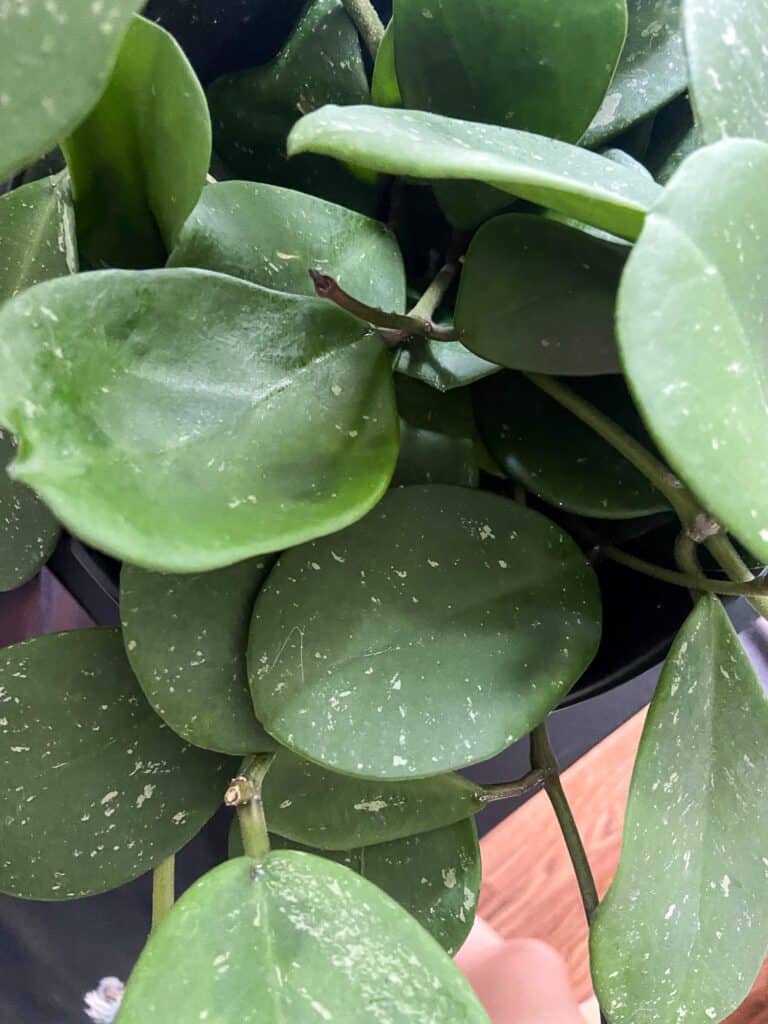
Pruning & Maintenance
Since the obovata can grow to long lengths, some plant owners prefer to trim down their plant, especially when the hoya is getting to be a bit too big. In addition, these plants benefit from pruning any leaves that may appear to be dead or damaged. Always make sure to sure a pair of clean, sharp burning shears before cutting into your plants.
Because of their waxy texture, you may notice hard water stains on your hoya’s leaves. This is totally natural, and can be left alone (though it might not be aesthetically pleasing).
You can easily polish your hoya’s leaves by dabbing a microfiber cloth in a solution of 1:10 lemon juice and water. Wipe your leaves gently and your hoya will be beautiful and glossy!
Choosing a Container & Repotting a Hoya
As we’ve mentioned previously in the article, hoya plants are sensitive to wet soil. When selecting a container to house your plant in, please make sure you choose a container with ample drainage holes.
Drainage holes will allow for excess water to drain out from the bottom of the planter, keeping your soil comfortable. In addition, many plant owners like to purchase terra cotta pots, as the porous material helps absorb excess water.
Hoya obovatas are tolerable of being rootbound, and therefore do not require frequent repotting. Expect to repot your hoya only once every two years.
How to Propagate a Hoya Obovata Plant
Hoya obovatas can easily be propagated via stem cuttings. Propagating your plants is a great way to multiply your existing plant to either keep to yourself or gift to loved ones. Follow these easy steps to learn more:
- Take a healthy cutting or a few cuttings from your hoya plant; make sure you put the cut below the leaf node, leaving a few leaves on the stem.
- Remove the lower leaves from the stem, exposing the nodes. There should still be a couple leaves remaining at the top of the stem.
- Prepare a small pot filled with moist potting mix. Bury the cut-end of the stem in the soil.
- Keep the potting mix consistently moist for the first few weeks of the new plant’s life.
- After a few weeks, rooting should have taken place and the plant will have become established. You can test if your plant has rooted by giving the cutting a gentle tug; if you are met with any resistance, then this is a great sign of a successful propagation.
- Proceed to transfer your hoya into a regular-sized pot with appropriate potting mix, and care for the hoya plant accordingly.
Common Pests in Hoya
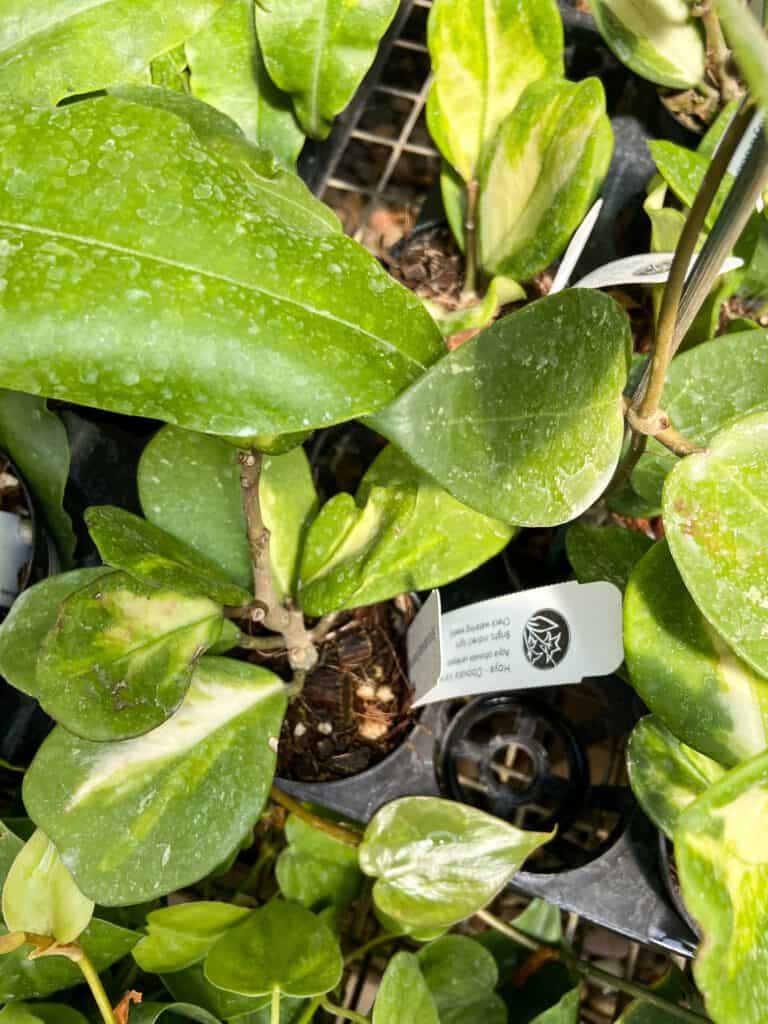
Unfortunately, hoya plants are susceptible to a number of common houseplant pests. Examples of such pests include aphids, mealybugs, scale, and spider mites. While no one wants to see pests infesting their beloved plants, there are simple extermination methods you can take to control these pests.
The most common method of pest control would be spraying neem oil on the foliage. In addition, you should prune any damaged foliage that was affected by the pest infestation. Some pests like to leave a sticky residue on the leaves of the plants they infest; you can clean off this residue by wiping your plant leaves with rubbing alcohol.
Common Diseases in Hoya
Like with many houseplants, especially ones that enjoy moist soil, the hoya is susceptible to fungal diseases that are brought on due to over watering. Over time, excess water gets trapped within the soil and causes the roots to break down. Signs of root rot include dying foliage that turns yellow.
While root rot is deadly, it can be remedied with intensive care. If you suspect your plant has become a victim of root rot, follow these steps:
- Remove your plant from its pot and gently shake away excess dirt.
- Inspect the roots; rotted roots are mushy and black compared to the firm, off-white color of healthy roots.
- Take a sterile pair of scissors and cut off any rotted roots you see.
- Repot your plant using clean, new soil in a pot that has drainage holes
The best way to treat root rot is to prevent it from ever happening in the first place. Always make sure you are properly watering your plant, making sure that the soil is not overloaded with water. Always remember that it is best to allow your hoya obovata’s soil to dry out completely before you water your plant again.
Where to Buy
There’s many places to shop for your own obovata.
FAQ
Yes, the hoya obovata does grow fast, and can reach a length of up to 20 feet ling at full maturity.
By maintaining meticulous care, you can expect the hoya obovata to flower in the spring and summer. Remember, this only will occur if you maintain the perfect environment for your succulent plant by maintaining the right soil, water level, and temperature & humidity. In addition, treating your plant with a phosphorous-based fertilizer helps stimulate flower growth.
You can find a wide range of hoya obovatas including a splash. For the most part, these hoyas are still in a smaller, juvenile state.
You can purchase these hoyas and grow them into beautiful, long trailing obovata plants. Their prices are fairly stable, ranging between $10 and $30 for a small hoya obovata. Their sizes online range between 4 to 6 inches.
In Conclusion
The hoya obovata is truly a spectacular houseplant to own. Not only is it incredibly beautiful, but it is easy to care for. With these simple care instructions, you can enjoy owning a hoya obovata for many years!
Want more houseplant fun?
Check these other hoya houseplant posts!

